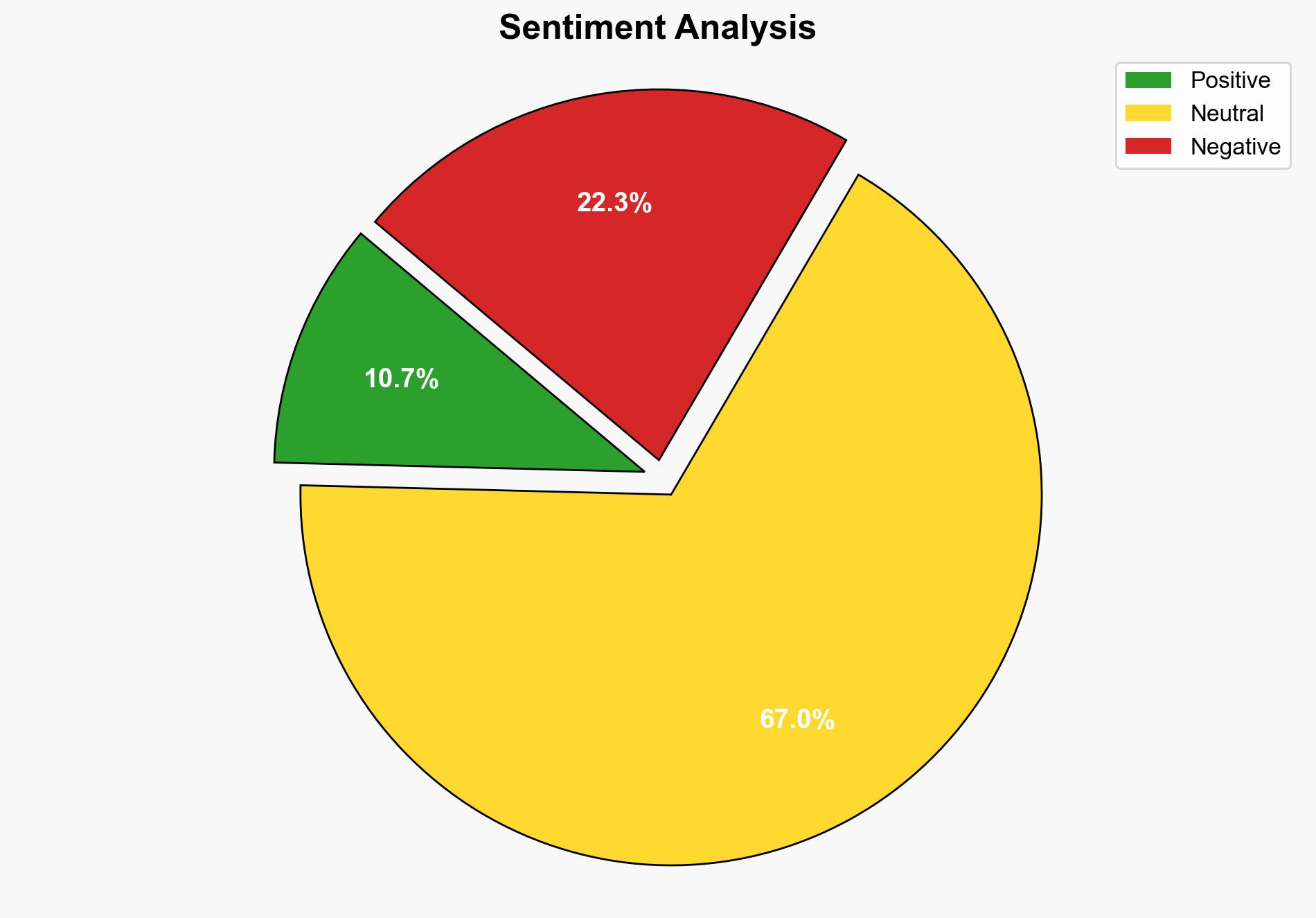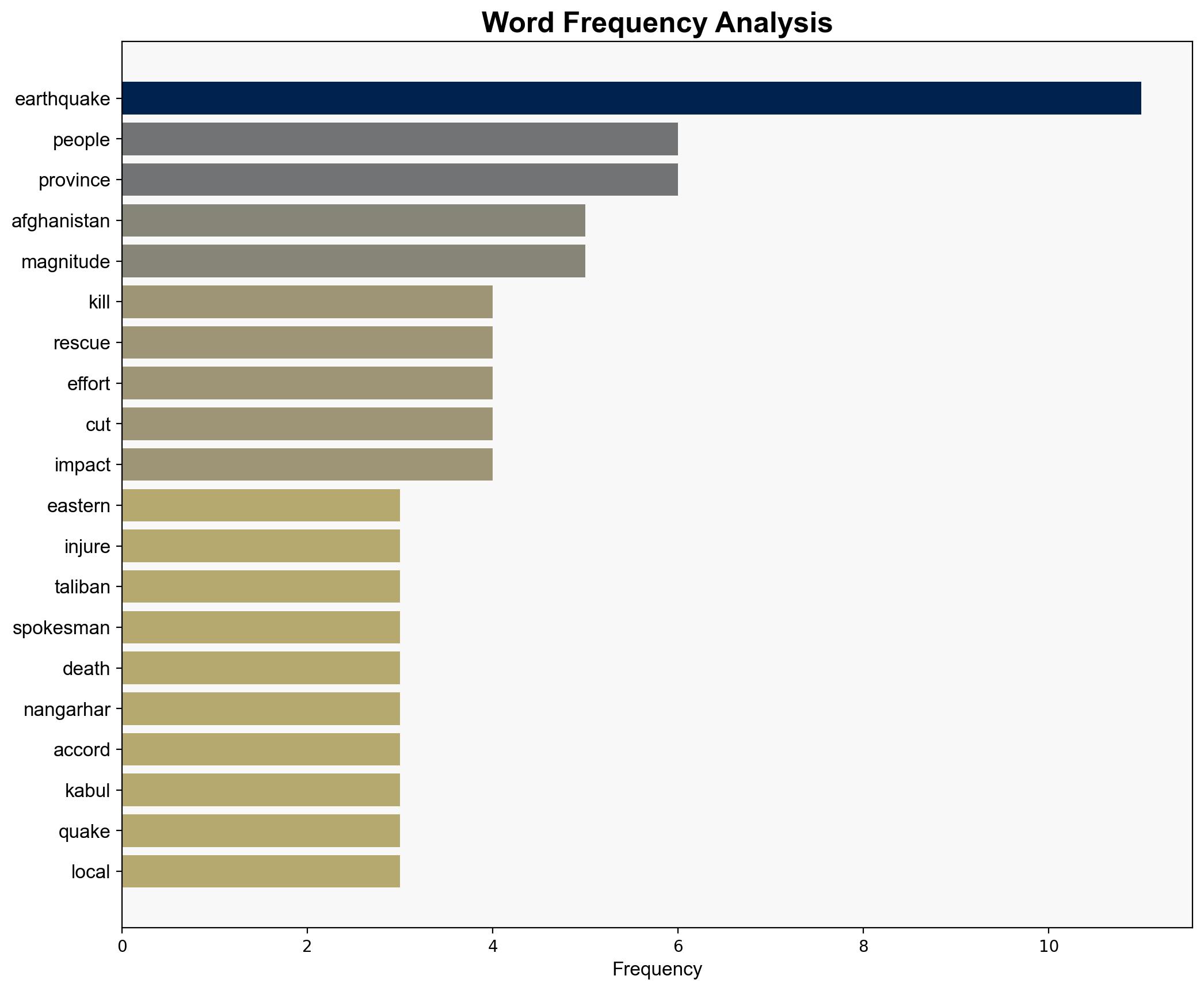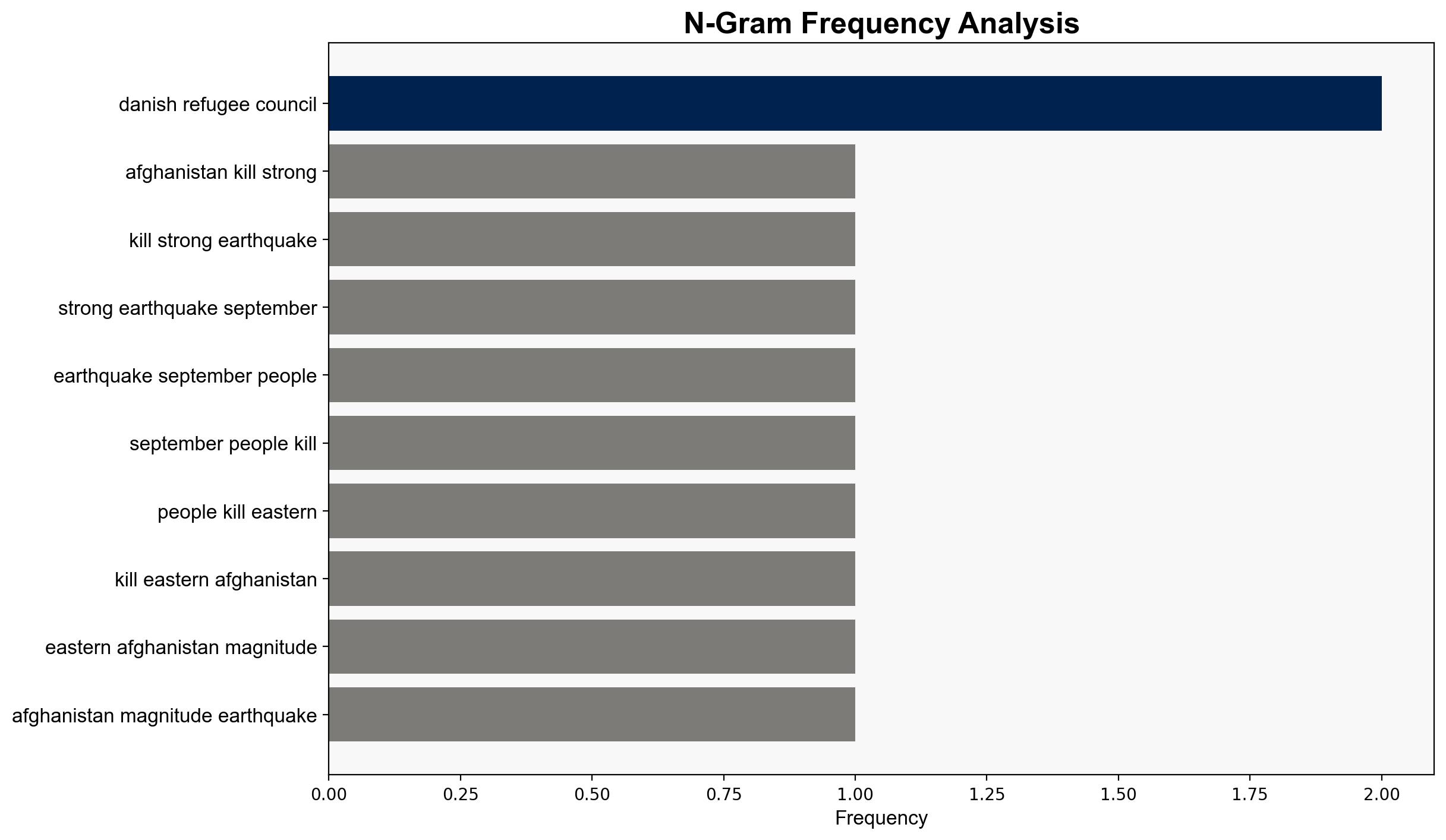Hundreds reported dead after quake strikes Afghanistan – DW (English)
Published on: 2025-09-01
Intelligence Report: Hundreds reported dead after quake strikes Afghanistan – DW (English)
1. BLUF (Bottom Line Up Front)
The most supported hypothesis is that the earthquake’s impact is exacerbated by inadequate response capabilities due to budget cuts and logistical challenges. Confidence level: Moderate. Recommended action includes international coordination to provide immediate humanitarian aid and long-term infrastructure support.
2. Competing Hypotheses
1. **Hypothesis A**: The high casualty rate and extensive damage are primarily due to the earthquake’s magnitude and shallow depth, compounded by the region’s vulnerability to natural disasters.
2. **Hypothesis B**: The high casualty rate is significantly influenced by the Taliban government’s limited capacity to respond effectively, exacerbated by international budget cuts and logistical challenges.
Using ACH 2.0, Hypothesis B is better supported due to the emphasis on logistical challenges and budget constraints highlighted in the source text, which align with the reported difficulties in rescue efforts and infrastructure damage.
3. Key Assumptions and Red Flags
– **Assumptions**: It is assumed that the Taliban government lacks the resources and infrastructure to manage large-scale disaster responses effectively.
– **Red Flags**: The report’s reliance on statements from Taliban officials may introduce bias. There is also a lack of detailed information on the international community’s response, which could indicate underreporting or strategic withholding of information.
4. Implications and Strategic Risks
The earthquake highlights Afghanistan’s vulnerability to natural disasters and the potential for humanitarian crises. The ongoing budget cuts and logistical challenges pose risks of prolonged suffering and instability. There is a risk of regional destabilization if aid is not effectively coordinated, potentially leading to increased migration and security concerns.
5. Recommendations and Outlook
- Immediate international humanitarian aid should be mobilized to address urgent needs and prevent further casualties.
- Long-term strategies should focus on building resilient infrastructure and improving disaster response capabilities in Afghanistan.
- Scenario-based projections:
- Best Case: Effective international aid reduces casualties and stabilizes the region.
- Worst Case: Inadequate response leads to a prolonged humanitarian crisis and regional instability.
- Most Likely: A moderate level of aid stabilizes the immediate situation but leaves long-term vulnerabilities unaddressed.
6. Key Individuals and Entities
– Abdul Mateen Qani (Interior Ministry Spokesman)
– Zabihullah Mujahid (Taliban Spokesman)
– Dania Al Sharif (Danish Refugee Council Spokeswoman)
7. Thematic Tags
national security threats, humanitarian crisis, regional focus, disaster response





